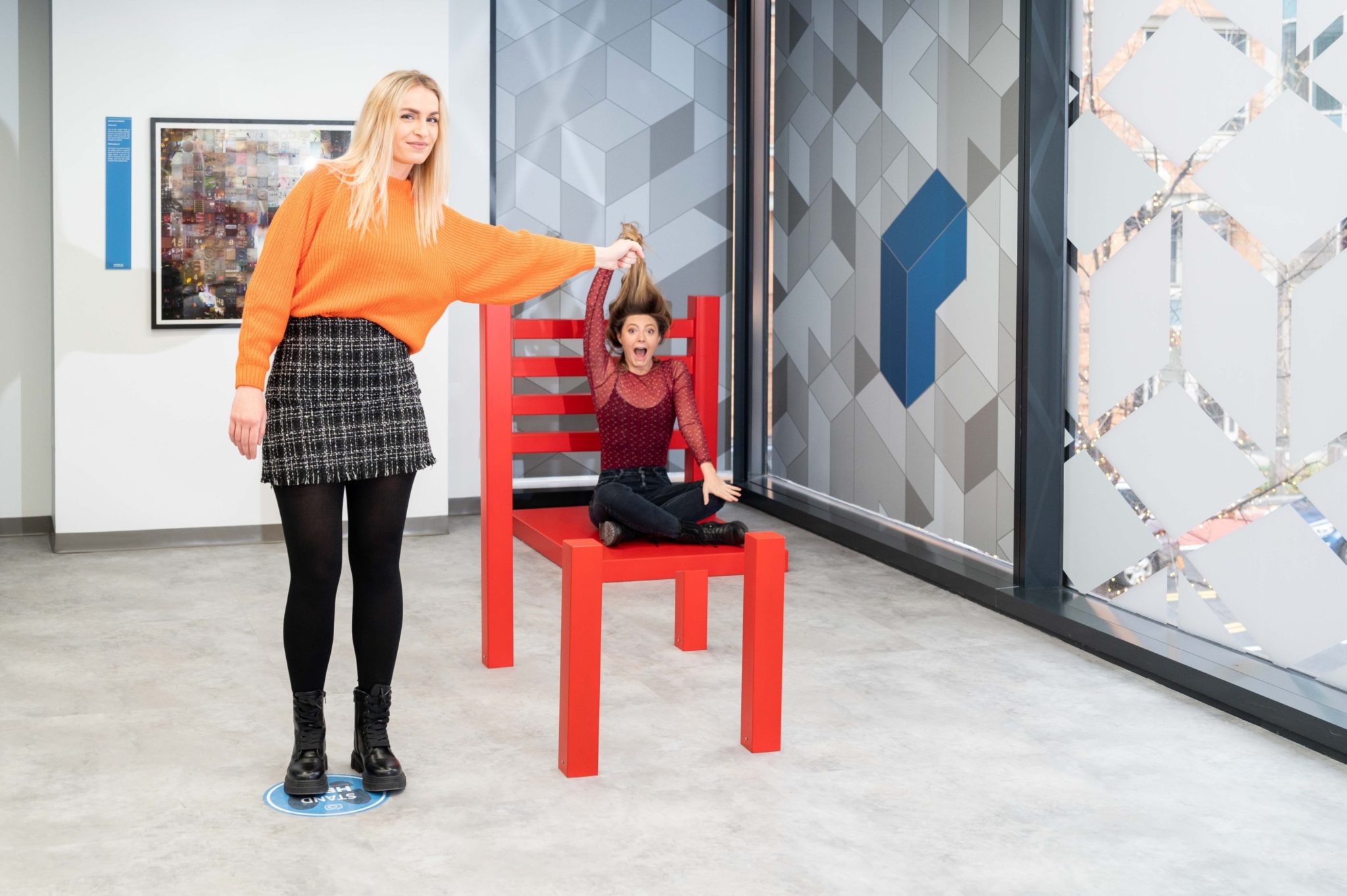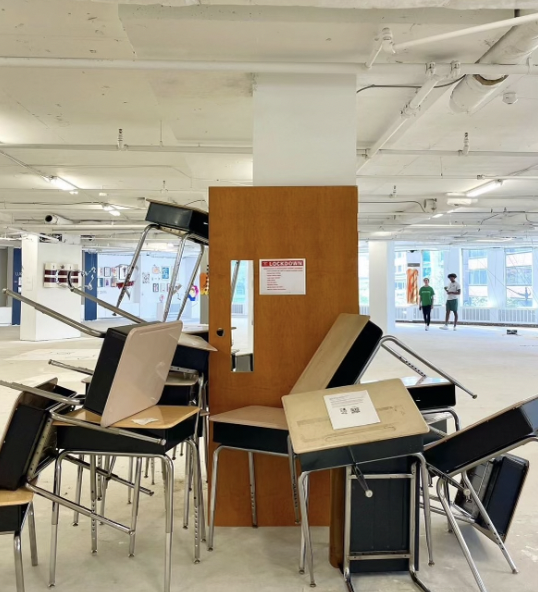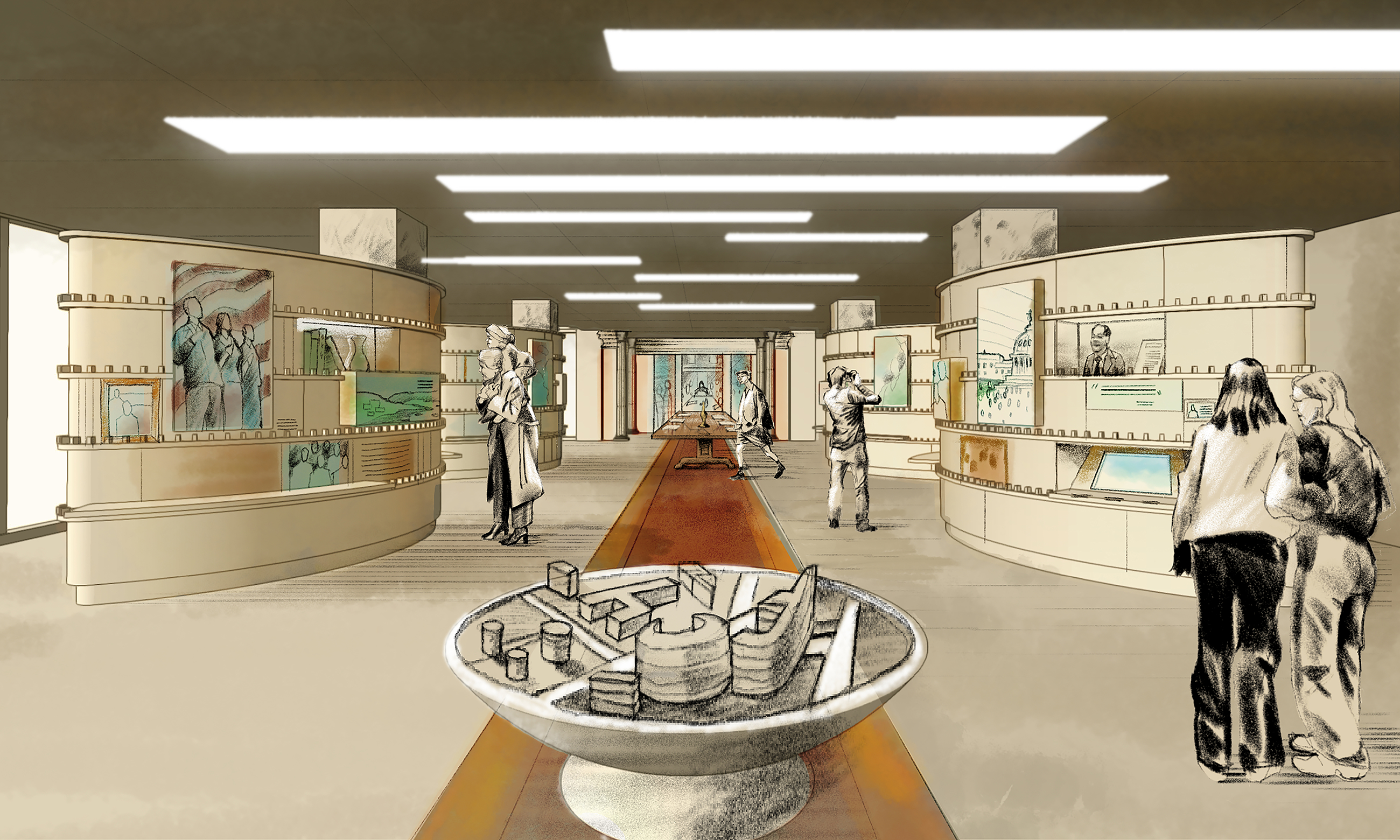You’re in a spinning tunnel, trying to walk forward on unsteady ground, as ripples of pink and purple surround you. As the vertigo starts to set in, you grab the hand rail beside you, take another step forward, and finally emerge. That’s just one of the psychedelic experiences at the brand-new Museum of Illusions DC, which opened in CityCenterDC (927 H St, NW) on Tuesday and which offers plenty of Instagrammable opportunities.
The original Museum of Illusions launched in Croatia in 2015; now there are more than 30 franchise locations around the world. Ghida Damirji, who owns and directs the DC location, is a native Washingtonian who wants the museum to reflect the city. Hence an illusion set in an upside-down Metro station, with materials Damirji says she sourced from the same vendors who supply WMATA.


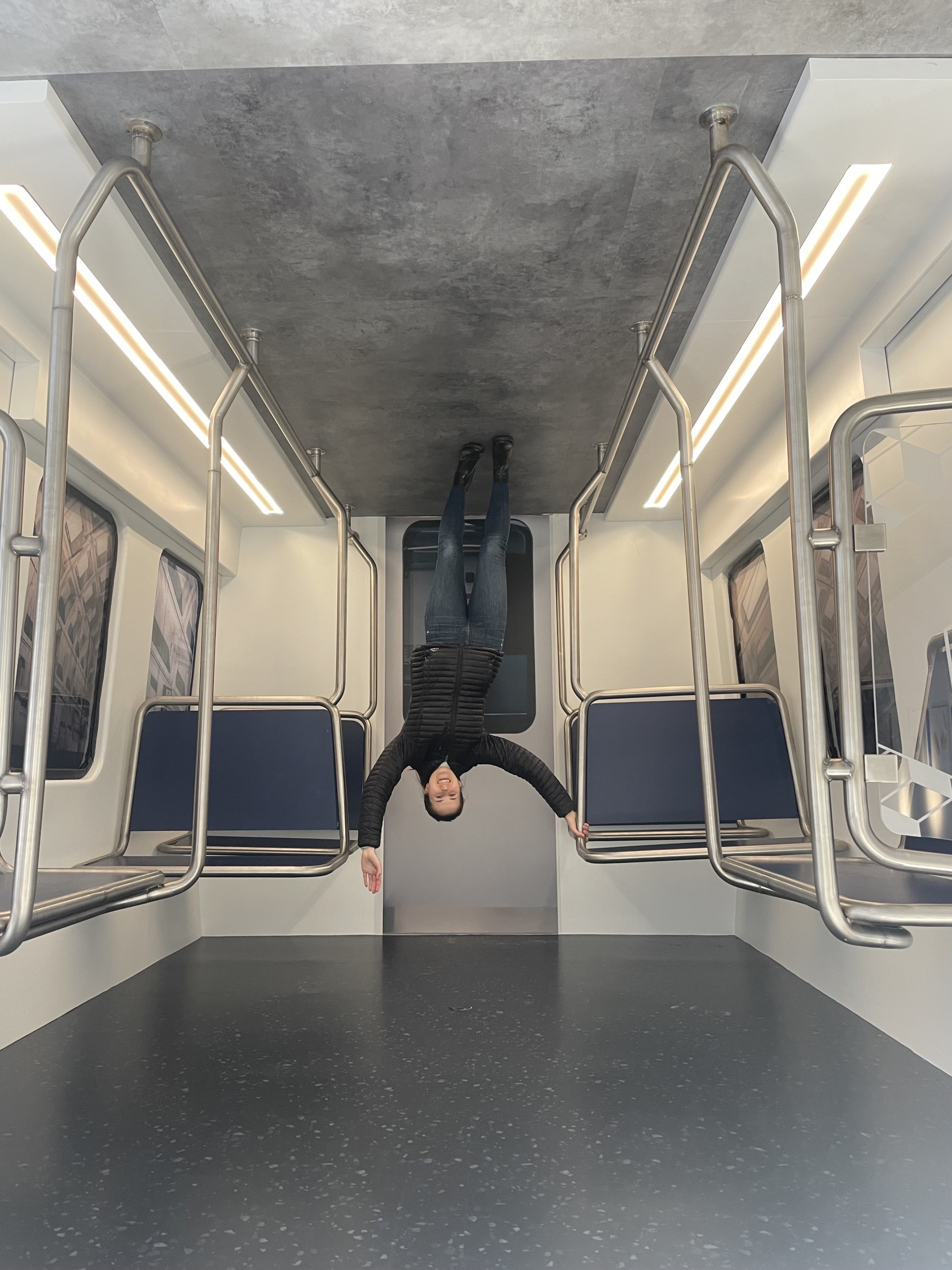
The museum also features an infinity mirror room, where you can close the door behind you and experience hundreds of iterations of yourself.

Few of the museum’s illusions require extensive technology. “What I love about this museum is there’s nothing mechanical in it,” Damirji says. “The mechanical part is your brain, and the lens is your eye. The technology is your eyes and your brain, and it’s all based on math, science, and psychology.” The color room encourages visitors to move between projectors on the wall behind them as they watch colors overlap.
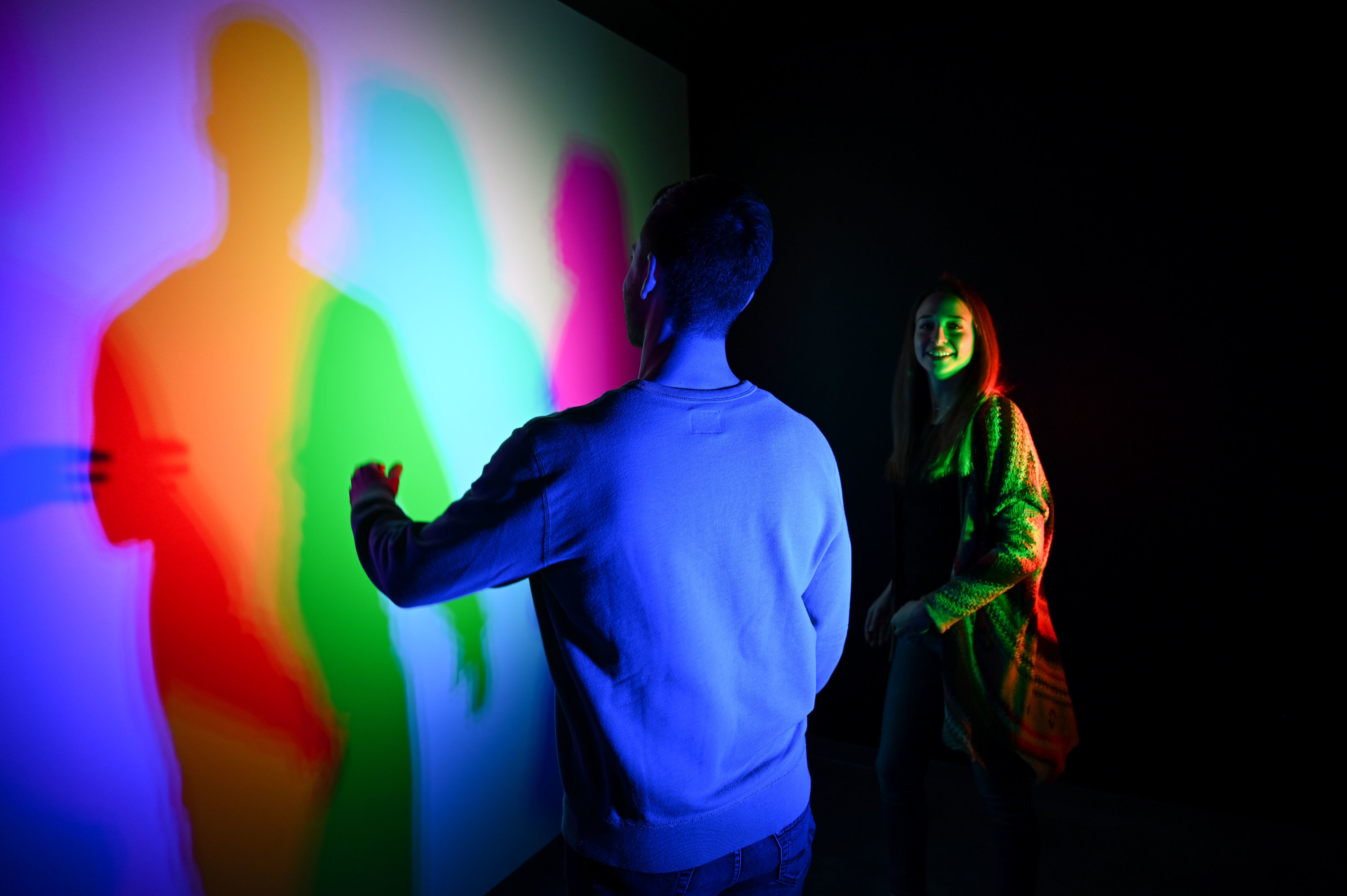
The museum offers opportunities to experiment with mirrors, lights, motion, and mind-bending illusions. Damirji hopes kids and adults alike will learn as they go through it. Captions next to each illusion explain how they work and encourage visitors to explore how our brains interpret information.
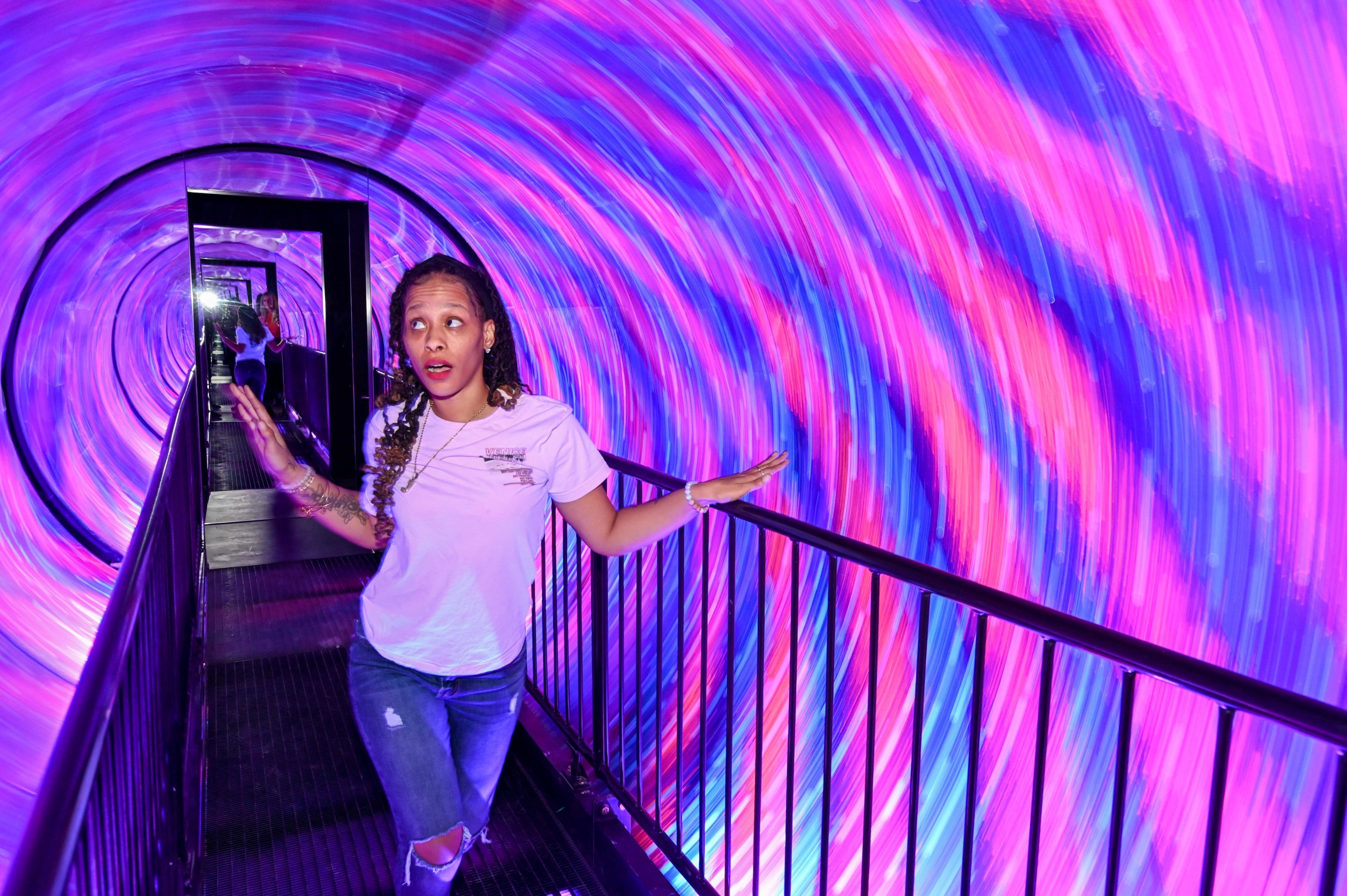
The “vortex room” features a spinning enclosure that makes you feel as though the ground is moving. While kids tend to love this exhibit, Damirji says adults often experience vertigo.
Damirji’s plan is for the museum to become a permanent fixture in D.C. and not just another pop-up immersive experience. “I was very intentional about where I picked to open the museum,” she says about its location at CityCenterDC. “We think that this diversifies the portfolio of what’s down here, and it’s accessible to everybody.” The museum plans to host cocktail parties, corporate-building events, retirement communities, and school groups. General admission tickets are $23.96 for adults, $21.95 for students, and $18.95 for kids ages 5-12.

